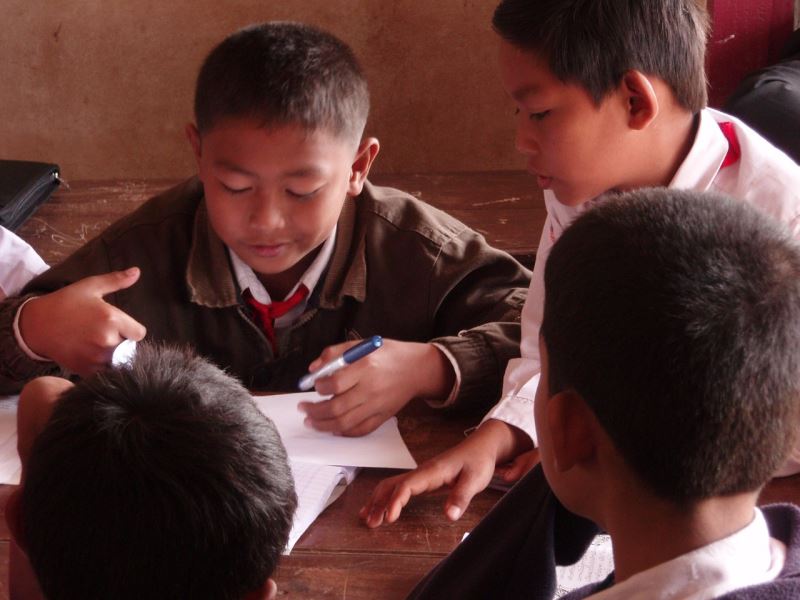A reader lives a thousand lives before he dies . . . The man who never reads lives only one. – George R.R. Martin
The quote by George R.R Martin stands out and is so true. Reading opens the doors for an individual to different perspectives, lives and events which one might not experience in one’s life. Yet, the reader can relate and empathize with the main character. It contributes very positively to a person’s ability to create a passage to different ideas, notions. The ‘social-ness’ of an individual is rewarded.
Reading aloud by parents and teachers introduces a child to a book. They understand that the book is to be held in the hands and has pictures. The stage called ‘pretend reading ‘ wherein the child understands that the book has pages; each page has some black ink with vivid illustrations which conveys meaning in the adult world. This could be as early as child is in mother’s womb. Yes! You read me right!
Furthermore, reading enhances the skills to decode (read) the words written in the book. The reading aloud sessions aid in understanding the phonics and decoding the words fluently. Furthermore, with frequent reading sessions the audience (children) grasp many vocabulary words. These words become part of the child’s language and in no time becomes a part of his/her speech. Thus, it aids in child’s ability to express his/her thoughts and ideas with clarity. It is also recommended by many speech therapists.
After knowing and understanding the positive impacts of reading aloud sessions, we as parents or teachers need to promise in our hearts that we will take up one read aloud session every day for the child at home or in class. There is nothing better you could gift your child! However, it is very important for an adult to PLAN the session before beginning with it. A book has a lot of potential to teach a child, if it is used extensively. Thus, the article further will help a parent/ a teacher to know of the steps to take up read-aloud with examples.
The first step to begin with a good read-aloud session is to select a book as per the child’s age and needs. A book with many difficult words might not interest a beginner reader. However, that same book might hook an advanced reader. Thus, know your child’s interests/ reading genres’ preferences and level of reading. There is no harm in trial and error! Post selection of the book sit with the book to plan the session. The read-aloud session will have three components to it: pre-reading, while reading and a post reading. Each component is essential in order to aid in child’s understanding of the story.
Post the selection of the book based on the above mentioned criteria, the adult needs to plan a pre-read session for the child. A pre-read session is to activate the schema of the child to relate to the story to be read. It is important that the pre-read should not last for more that 5-7 minutes, or else it will divert children’s attention away from the book or the plot of the story. An adult might take a book-walk wherein the child is shown all the illustrations to develop a basic understanding of the story.
After the pre-reading, the adult needs to read the story to the child. The story should be read-aloud with voice modulation and expressions. Otherwise, the child will not be able to visualize the story. The child should be able to see the story in his/ her head through your reading aloud. Only then will they enjoy listening to you! Thus, a caution, do not stop at each page to ask “What have you understood?” This breaks visualization momentum. Instead, scaffold the child in their reading by asking questions like ‘What do you think will happen next?’ (a predication-based question).
While reading questions can be of different kinds, for example: prediction-based questions, illustration-based questions, vocabulary-based questions. Each of them serves a different purpose. Thus, each question should be thoughtfully selected. Also, it is important to note that the number of questions selected should not interfere with the JOY of reading. Otherwise, the child will stop looking forward to your read-aloud sessions.
Finally, it is the post- reading session, wherein the adult plans an activity which will be the carry forward of the story. The post-reading session can extend to 15-20 minutes varying as per the task in hand. The adults could include different activities like drawing, painting, craft, and origami as the medium to present their understanding of the story / character.
A post-reading session might also include writing a letter to a friend of their experience of reading a book or writing a book review. Again a caution, do not emphasize only on writing as a skill in the post-reading session. The child might be forthcoming in the post- reading sessions.
Reading will be fun if you create fun and magic for them! Do not consider it as a chore which has to be done for sake of it. Enjoy reading for yourself and for your child. Read for the Joy of reading. Nothing in this world can take place for a mom or dad’s lap for a child. Snuggled up tight in your arms to enter the magical world of books, this is the best GIFT from you!
Upasana Kapur is working in the field of education and is based in New Delhi.










